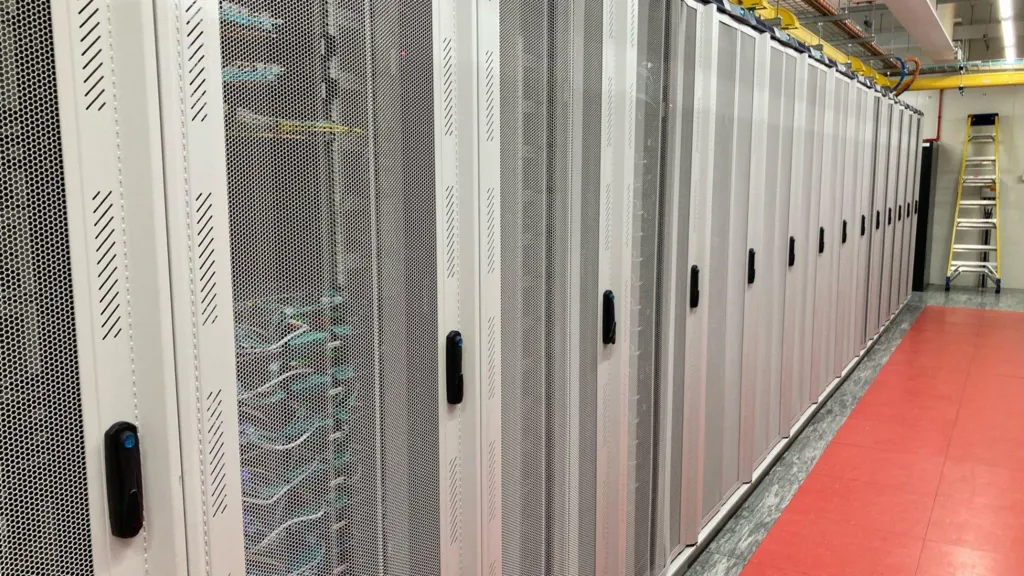The town of Slough in Berkshire, just outside London, has had a terrible press over the years. Many will put that down to the British sitcom The Office, yet even before that in 1937 the poet John Betjeman wrote “Come friendly bombs and fall on Slough!”.
But that is perhaps changing. With its direct transport links to London, close proximity to Heathrow Airport and fast fibre optic connections, it is said to be perfectly placed for a hi-tech revolution.
According to the Slough and South Bucks Observer, the town has “Europe’s largest collection of data centres”, with 34 currently based there and more on the way. Demand for data centres has been growing ever since the internet took off.
According to the local newspaper, Slough, which is just outside the M25 and is less than 10 miles away from Heathrow, welcomed its first data centre in 2005. Slough Trading Estate is now considered to be the largest data centre hub in Europe.
For those who don't know, these data centres are where pretty much anything on your phone or computer is stored – the Cloud, websites, social media, pictures, music and more. Many of London's banks and emergency services use Slough's data centres.
But this is a secretive and highly sensitive world where security is not unsurprisingly paramount. Many data centres do not want media attention and politely declined our requests to go inside them. Even the actual number of data centres in Slough is difficult to pin down.
Slough Borough Council says there is “no definitive record source” to identify the number of data centres in the borough but it is estimated to be about 30 to 35. So when we were invited in by Virgin Media O2, it was a rare opportunity to see inside a data centre.
Tom Finch, a technical site engineer who works in the data centre, says the site is O2's largest mobile data centre in the UK and manages traffic for 3G, 4G and 5G customers.
“You have voice calls, you have texts, you have all of your social media platforms like WhatsApp. Everything you operate on your cellular data on your mobile phone will pass through this data centre,” he says. He says demand has increased since the rise in home working and thinks Slough benefits from very fast fibre optic connections.
“Slough is on the data highway in the UK. It's far enough outside the capital but through here we have a lot of traffic passing,” he says.
Dan Goodenough, the technical site operations manager, says they have to predict when people want data and demand has gone up since the pandemic. He says they see “surges in traffic demand, but also the types of traffic”.
“For example it's home working but it's also online gaming, virtual reality, there's different types of traffic that go across our network today than there was 10 years ago,” he says.
“The most recent Fortnite download for example, we saw massive peaks in the amount of data our customers were downloading. And that's why we invest £10bn in infrastructure to make sure we can provide the best service.”
So why Slough?
According to the website datacenters.com, the advantages of Slough are its strategic location with excellent transport links to London. The proximity of Heathrow is also an advantage.
It says the Slough data centre market offers a number of size facilities to allow expansion. And Slough also has very robust and fast fibre optic broadband connectivity. It is situated on the main fibre optic line between London and the US.
The borough council says being on the main cabling running out of London to Ireland and the US is an advantage. It says it was the capital's banks that helped create this data centre hub.
“Slough started as a data centre location by banking institutions for their own in-house data centres, looking for locations that were outside of London for emergency planning reasons, but close enough so that the miniscule time delay in transmission of data across the distance of cabling was sufficiently small to not be an issue to financial markets in terms of transaction delays on trading,” the council says.
“Co-location is an advantage for data centres, so the existing cluster attracts further interest.” However, data centres are resource hungry and use a lot of electricity to keep the servers cool and the internet running.
They also use a lot of water for cooling. In the 2022 drought, Thames Water looked at how much water data centres in the area were using. National Grid's chief executive, John Pettigrew, has previously said that the power data centres use would increase six-fold in the next decade.
He said the grid was becoming “constrained” and “bold action” was needed to create a network able to cope with “dramatically” growing demand. According to the website datacenters.com, sustainable energy is a goal in Slough.
“The International Energy Agency reports that hyperscale data centres, which are prevalent in Slough, have accounted for a substantial increase in energy demand globally,” it says.
“This has prompted data centre operators in Slough to invest in renewable energy sources, energy-efficient equipment, and advanced cooling technologies to reduce their carbon footprint.”
On the site, Virgin O2 also monitors its phone mast network and its broadband. Emma Fish, the regional operations manager, says data centres are key in the world today and Slough provides the ideal base.
“I think people do realise now how important broadband is,” she says.
“I think people class it as a fourth utility. When you buy a house, it's the first thing you look at really to see how fast the broadband is and how reliable it is and I think we depend on it more so now than we have ever done.”
“I think Slough is a key location. Just off the M4, just outside London, I just think Slough is the perfect location for data centres,” she adds.


